Finding The Right Residential Roofing Service
Importance Of Understanding Your Residential Roof Warranty
Complete Understanding
The majority of homeowners and building owners tend to focus on the overall length of their roofing warranty. They never fully understand what said warranty consists of, unfortunately. The majority of warranties were designed to protect the manufacturer more so than the building owner. Before any work is performed, here are a few questions you should ask your contractor:
- What type of warranty am I receiving?
- What is the term of the warranty?
- What will void my roofing warranty?
- What are my maintenance responsibilities?
- What does a typical warranty cover?
If possible, ask for a warranty template before purchasing a new roof or coverage. Read through the paperwork in its entirety, ensuring you understand all the little intricacies and small print.
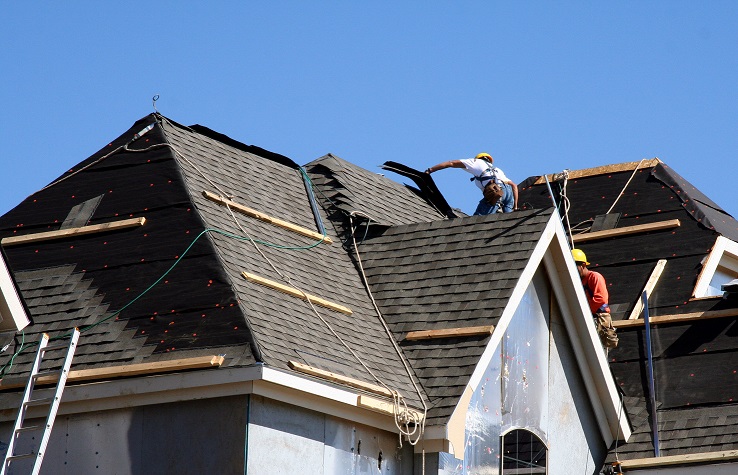
Benefits of Understanding Roofing Warranties BEFORE Your Next Roof Installation
A new roof is a big investment and roofing material costs have steadily risen over the last decade. That makes the warranty that a roofing contractor offers more of a decision factor when gathering estimates for your next roof replacement.
It might surprise you what may or may not be covered on a roof warranty. That is why it is so important to do your due diligence and find out what the typical warranty will cover before your purchase a new roof system.
Most homeowners tend to focus on the length of the warranty, which is rarely the root of roofing malfunction issues. Often homeowners confuse a ’30 year warranty’ or ’50 year warranty’ product warranty with the workmanship or craftsmanship warranty offered by the roofing contractor. Manufacturer warranties vary – some cover just certain material, such as shingles, while others cover the entire system.
Manufacturer warranties are often tiered, offering coverage on the material versus the entire system and/or labor cost for repair. Most require the contractor to perform warranted repairs for the first few years after the install.
Most roofing contractor’s warranties cover workmanship, not materials. These are the warranties you are better served paying more attention to. The roofing contractor’s workmanship warranty is where the rubber meets the roof. If something goes wrong with the roof, the roofing contractor is the one you will call.

4 Common Ways You Could Potentially Void Your Warranty.
1. Antennas and satellite dishes – If you drill holes in your roof to install an antenna or satellite dish you could possibly void at least part of your roof warranty. Since any leaking could be caused by the holes that you drilled.
2. Skylights and solar panels – Keep your warranty in mind before starting a home improvement project that involves major roof work, such as installing skylights or solar panels that require roof penetration or the removal of shingles
3. Pressure washing – Homeowners might choose to pressure wash their roof because of issues such as moss buildup. But they can severely damage their roof in the process because of the strong force of pressure washing.
4. Ventilation – Improper attic ventilation
can also nullify your roofing warranty. Inadequate venting can trap heat in
your attic and wear out your shingles.
In a nutshell, before installing that new satellite dish, solar panel or
skylight, make sure you can do the work without turning your roof warranty into
a useless piece of paper.

The Importance Of Understanding Roof Warranties Featured
As the area’s most trusted roofing contractor, we encourage our clients to fully understand the extent of their coverage. It’s beneficial during times when unexpected damages or maintenance issues spring up over the years. Here’s a deeper, more insightful look at roof warranties.
Know Your Coverage
Knowing the full extent of your coverage prevents you from spending more than necessary should issues arise with your roofing system. You can also be better prepared, financially, knowing which aspects of the roof isn’t under coverage should repairs or a full replacement be needed.
Have Leverage
Warranties are legal and binding and they ensure that whatever work you need, only a qualified roofing professional does it. Furthermore, and perhaps the biggest advantage you’ll have as a homeowner, is your warranty guarantees an inspection by no less than the roof manufacturer’s representative.
Protect Your Investment
Protection of your investment is what warranties come down to. As one of the most important and most expensive components of your home, it’s crucial to have a safety net should anything go wrong. Your roof bears the full brunt of extreme weather all year round and this daily stress can do a number on your roof.
Understanding the ins and outs of your roofing warranty lets you know what you are and aren’t entitled to. This keeps you from unnecessary spending during repairs and helps you prepare your financial resources for things not covered by the warranty.
Facts on Roofing Warranties
1. Only Defects in Roofing Materials are Covered
Warranties on roofing materials only cover manufacturing defects and not deterioration of the roofing system due to prolonged use. The lifespan of roofing materials depends on multiple factors including the installation procedure, environmental factors, and conditions such as the ventilation and insulation of the building. If a roofing material comes with a warranty of thirty years, it simply means it will remain free from any manufacturing flaws for thirty years.
2. Only Specific Conditions are Covered
Roofing warranties usually cover specific conditions, such as algae resistance, manufacturing defects, and blow-off resistance. If you get comprehensive cover for the roofing system, it is important to know the specific details and not assume that all eventualities are covered.
3. It is vital to Know Cover and Compensation Details
As a customer, it is important to go through details of the manufacturer’s warranty. If there is algae coverage on the roofing system, you may get compensated for cleaning the roof and not on residential roof repair or complete replacement of the roofing system. Understand the specific details of available covering to ensure that you are protected against known defects that may otherwise prove heavy on your pocket.
4. You Must Go Through the Installation Warranty
Apart from the manufacturer’s warranty, it’s also important to consider the installation warranty provided by your residential roofing contractor. Know what’s covered in the installation warranty and the length of cover. Warranty attributes are a great way to measure the confidence of your contractor in their work.
5. Always Take Note of What’s Not Covered
Apart from getting a comprehensive understanding of what is covered under roofing warranties, you must also get clarity on what’s not covered. Problems such as inadequate ventilation, defective design of the building, and faulty drainage systems are usually not covered under the roofing material and installation warranties.
This blog is a continuation of our first installment in this two-part series on ten must-know facts on roofing warranties. As emphasized in our first installment, it is always important to understand the finer details of your roofing material and installation warranties. Triumph Roofing and Construction provides free roof inspection services to help you assess the health of your materials and roofing structure. This write-up discusses five more facts that you need to know about roofing material and installation warranties. Let’s start.
Toilet Installation In Simple Steps
Things You Need To Know Before You Purchase A Composting Toilet
If you’re in the market for a composting toilet there’s going to be a lot of questions floating around in your head, like where do I buy one, how can I install it, do they smell? Well, we’re going to try and cover all the things you need to know before you jump in and purchase a composting toilet.
#1 They don’t smell
If a composting toilet is maintained correctly there should be no smell at all.
Fans and vents will move any unwanted smells away from your bathroom, shed,
boat or RV (depending on where you have it installed and the type you have) but
the only smell that should be coming out of your toilet is an earthy smell
similar to the gardening section in a Bunnings or supermarket or a nursery.
#2 They are more maintenance than a
normal toilet
It’s true. A composting toilet is going to be more maintenance for you but if
you’re looking for a composting toilet our guess is that a little extra work
isn’t going to put you off. A composting toilet, whilst a little more work, is
about taking personal responsibility for reducing your footprint on the planet.
Composting toilets help you do this by reducing the water you use in the
bathroom considerably (about a swimming pool’s worth of drinking water is
flushed down the toilet every year by the average family) and eliminating your
reliance on treatment plants that use natural resources to treat your waste.
#3 Some people will be weird about it
There’s a pretty good chance that if you have friends that have only ever used
a traditional western flush toilet, they’re going to be like “I do what in
where?” Keep this in mind for your next dinner party or get together, people
will ask you questions and be part fascinated and part weirded out or worst
case disgusted. A simple remedy to this is to ask them if they’ve ever been to
the loo in a national park, if they have there’s a good chance they’ve used a
composting toilet. If they don’t have a problem going there, what’s the problem
going here?
#4 You don’t need to buy special toilet
paper
Normal every day toilet paper is fine to put in your composting toilet. You can
even throw in the roll when you’re done with it if you like! If you really want
a breakdown of the types of toilet paper you can use in a composting toilet,
take a look at our article called What toilet paper can you use in a composting
toilet?
#5 It’s worth getting some extra
chambers/drums or a composting bin
Depending on your level of usage, purchasing some extra chambers for a batch
system is always a great idea as they will enable you to swap over the
compost chambers easily without having to transfer the compost to a pile in the
backyard or another container. If you have a system like the Clivus Multrum CM2
extra chambers you simply remove the full chamber and replace it with
an empty one while the full chamber cures in a sunny spot in the garden. If
you’re using a draw type system like the Sun-mar or Ecolet range you can empty
the drawers directly into your composting bin.
Note: it’s advisable not to use compost from your composting toilet on plants that you’re going to consume. Around the base of fruit trees is fine.
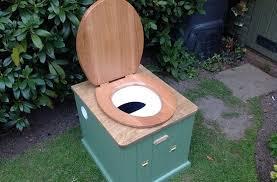
Urine Command
Urine is the safest of bodily fluids — typically it’s sterile. In most parts of the world it’s probably safer to have contact with urine than with the local water supply. Leptospirosis and schistosomiasis can be carried by urine, but if those diseases are in your area, it’s still usually better to apply urine to the soil or a compost pile than to flush it into a body of water.
The urine-diverting throne has a funnel in the front of the “drop zone” which carries the urine away to a jug for immediate use as an excellent fertilizer. This greatly reduces the volume of material that goes into the composter. The weatherstripping on the underside of the seat and lid is there to block insects. For a one-way valve, drop a ping-pong ball into the funnel; pee goes in, smells don’t come out. A water trap pipe from a sink with mineral oil in the upper part can do the same.
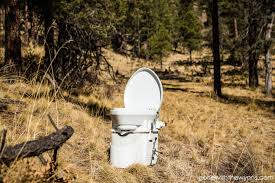
Why is the Carousel a Batch Composting Toilet?
A batch composting toilet system utilizes two or more interchangeable or movable bins. One is filled at a time and then turned aside allowed to cure while another bin fills — just as with twin-bin and triple-bin yard composters. By not continually adding fresh excrement and urine to older, more advanced material, the material decomposes more thoroughly, uninterrupted by the added nutrients, pathogens, salts, and ammonia in fresh excrement. Also by dividing the material, it can have more surface area, and thus better aeration. Batch systems require monitoring the level of the bins to determine when a bin has filled and a new one must be moved into place. However, because there is more surface area and the material is divided, there is often less or no mixing and raking of the material.
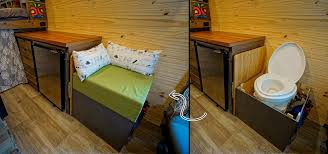
Benefits of Using a Composting Toilet
1. Ease of installation
The composting toilets can be installed almost everywhere. They are easy to install and are particularly popular in remote areas or areas that do not require permanent residence.
2. Save up on the usage of water
Composting toilets operate just like standard toilets, although they do not require a water source. Since they do not need water for flushing, they save up on water. They are, therefore, the best to use in rural areas or in places where a source of reliable water is unavailable. They are also perfect in places where there is low water pressure or high septic demands
3. Cheap to install
As already mentioned, composting toilets do not require the use of water or a connection to a septic or sewer system. As a result, they have fewer installation requirements, are easy to install, and are cheap to purchase. In fact, most composting toilets go for less than $1,000 and cost less to install.
4. End-products enriching the soil
the compost end products are profitable to the soil as they add nitrogen, calcium, phosphorous, and potassium. It operates as organic fertilizer or manure that can be used to enrich the soil. Additionally, it eliminates the need for an individual to purchase inorganic fertilizers. In residential areas, the products can be used for domestic gardening like in trees, flowers, or other plants.
5. They save up on space
Composting toilets do not require a water connection and, therefore, can be installed literally anywhere. They are, therefore, perfect for places where size is limited and can even be installed outside.
Reasons You Need a Compost Toilet
Compost toilets offer a solution to those who wish to maintain a small carbon footprint. Learn about the benefits to choosing this type of sewage system.
1. Compost toilets are truly off-the-grid and will lower your power consumption.
Ventilation and lighting aside, compost toilets use very little power. As much as 13 percent of energy used in the US is related to water. Compost toilets cut back on energy throughout the entire treatment process—from the septic system to the treatment plant—in turn helping waterways.
Take the Chesapeake Bay, for example. Here, nearly 1.5 billion gallons of wastewater from 500 sewage treatment plants flow into the bay every day. Human waste contains dangerous pathogens, viruses and bacteria which can harm wildlife and ecosystems.
2. They are sustainable and environmentally friendly.
A compost toilet is great in rural areas without access to septic or existing plumbing systems. Because they don’t need much in the way of infrastructure, these potties have a small impact on the environment. Treating waste onsite cuts back on environmental disturbances and financial costs of connecting to and maintaining vast sewage systems. Everything that goes into the toilet, including paper, is capable of being recycled, further reducing the need for commercial fertilizers.
3. Compost toilets are ideal in places that are prone to drought or where water is scarce.
More than a quarter of the average American’s household water use comes from flushing toilets. At five flushes a day, one person may use as much as 2,336 gallons each year. While federal law requires that toilets purchased after 1994 use 1.6 gallons or fewer per flush, outdated systems can use as much as seven gallons each time. Not only will you save money each month on your water bill, with a composting toilet you could also save as much as 6,752 gallons annually.
4. Humanure acts as a natural fertilizer to enhance growth of non-edible plants.
Waste created from a composting toilet can be used as an organic alternative to traditional fertilizer to help promote soil health. One person using a compost toilet can produce more than 80 pounds of organic humanure each year, and with nearly seven billion people on the planet it has the potential to serve as a renewable resource. Humanure is best used by burying the compost around tree roots, shrubs and garden beds of non-edible plants.
5. The entire system is self-contained.
There are two types of composting toilets:
- A self-contained system is connected in a single unit. These options are great when working with confined space or a multi-story house.
- A centralized system utilizes a large, centralized tank installed under or outside of the home where all waste is flushed into. This is a great option for an experience similar to the more traditional toilet.
Both systems eliminate the need to transport wastes for treatment and disposal (bye bye, septic system). Sewage and wastewater contain bacteria, funguses, parasites and viruses that can be dangerous to human health. By reducing the need to transport raw sewage (either via infrastructure or by cleaning septic systems) the risk of exposure becomes less of risk to people living in these areas.
Pros And Cons Of Different Carpet Cleaning Methods
Types of Carpet Cleaning Methods used by Companies
While you are spoilt for choices when selecting carpet cleaning company for your home or business, it is important to understand the different types of carpet cleaning methods used by different companies as not all carpet cleaning methods work for your carpet.
Here are the types of carpet cleaning in the market:
Hot Water Extraction Cleaning
Commonly known as steam carpet cleaning, hot water extraction cleaning use high pressured hot water to agitate the carpet fibre and dissolve dirt in the carpet.
Hot water extraction cleaning typically involves application of cleaning agent on soiled surface, agitation of carpet with brush and followed by rinsing. After cleaning agent settle in the carpet for a short duration, the carpet will be “washed” by a carpet cleaning equipment to rinse the cleaning agent thoroughly and finally left to dry in room or air conditioned temperature
An average sized carpeted office of 3000 sq ft would normally take about 2 hours to clean and will take at least 4 hours to dry. Most cleaning companies would advise carpet to be cleaned in the late afternoon so that after cleaning is done, the carpet can be left to dry over night and office operation can resume back to normal the next morning.
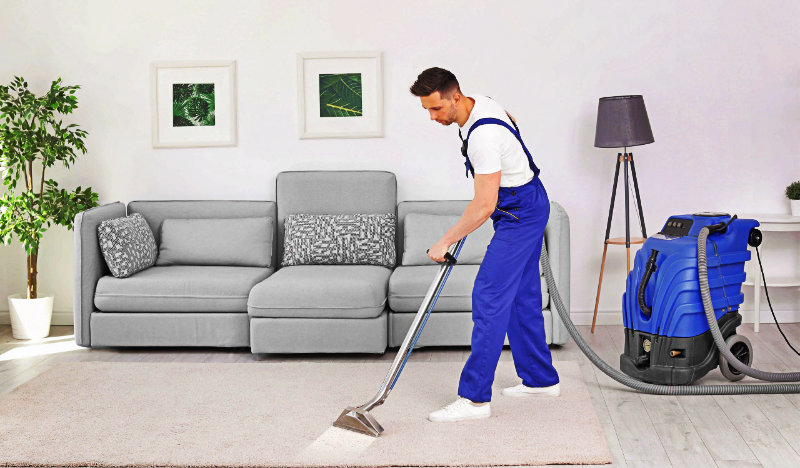
Bonnet Cleaning
High-moisturised equipment has been used along with an absorbent pad dipped in a cleaning agent to spruce up the upper surface or fibre of the carpet. A bonnet cleaning method is used by professionals to absorb dust, grime, soil and dirt from the upper layer of your delicate floor coverings using a cutting-edge machine.
It utilises the cleaning product, which is mixed with carbonated water and then used as a spray over the carpet. After that, professionals will attach the absorbent pad with the floor machine to get rid of soil and dirt from the surface of the carpet. The machine absorbs all the dust and dirt and leaves your carpets sparkling clean.
This method is ideal for companies and hotels because it quickly washes the carpets without disturbing the clients, guests and visitors. However, bonneting doesn’t clean the floor coverings deeply, but most of the carpet owners prefer to use this cleaning method as a temporary solution.
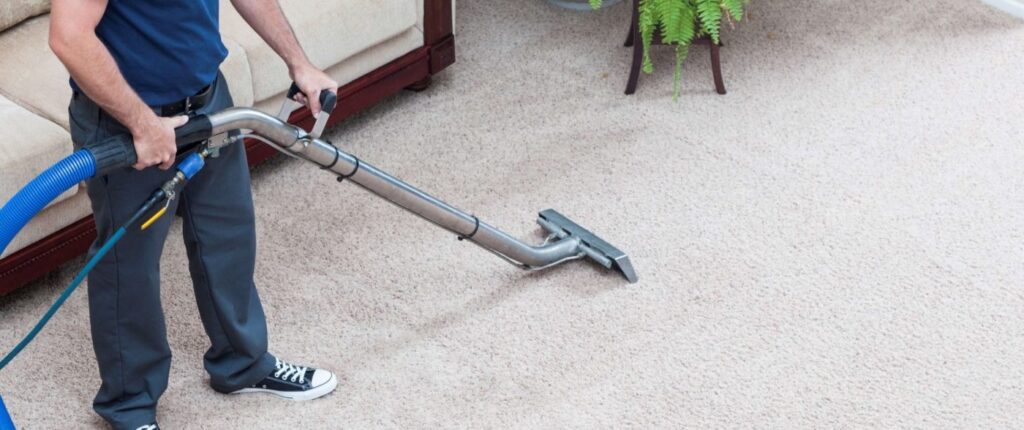
Dry Cleaning
This is one of the latest cleaning methods and has gained increasing popularity and approvals by leading carpet manufacturers because of its effective cleaning performance and convenience as it doesn’t require drying time. This involves the use of specialized machines to clean carpets with recently developed chemical technologies that permit no-moisture, or very low moisture cleaning, resulting in carpet beautification, and removal of stains, dirt, sand, and allergen.
Carpet Shampooing:
Shampooing of carpet may seem to clean heavily soiled carpet, the technology’s disadvantage is it leaves behind high amount of wet foam residues in the carpet and takes a long time to dry, becomes sticky when it dries because no rinsing is done after shampooing and rapid re-soiling of carpet, which makes this method less popular than the others.
DRY FOAM: This method is very similar to shampooing in that relies on the aggressiveness of the brushing action, which is usually counter-rotating cylindrical brushes. The only difference is that the solution is whipped into a foam and applied right before the brushes instead of a liquid as in shampooing.
Preconditioning: Applying preconditioning agents to the carpet hot early in the process allows time to bond with the soil particles and easier to remove afterward. This helps to loosen up stubborn dirt. The choice of preconditioning agent depends on the carpet ‘s fabric. You may want to use alkaline solutions when working with synthetic fiber carpets and a mildly acidic solution like diluted acetic acid on woolen carpets.
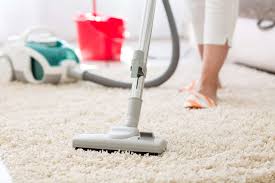
Encapsulation:
Foam encapsulation use synthetic detergents as a base that will crystallize into powder form when dries. Loosened dirt particles in carpet fibre will be encapsulated into powder once the applied cleaning foam dries and, finally, vacuumed or brushed when the foam dries after cleaning.
The froth encapsulation cleaning method has overtaken carpet shampooing technology as the former uses less water during cleaning which result in shorter drying time compared to the carpet shampooing. The froth encapsulation cleaning has gotten thumbs up by those who advocate using of eco-friendly products since there is less chemical residue left out after cleaning when compared with carpet shampooing.
Even though this method has shown good cleaning results, this cleaning method is not in a position to clear heavy soiling carpet due to the technology’s limitation.
DRY FOAM
This method is very similar to shampooing in that relies on the aggressiveness of the brushing action, which is usually counter-rotating cylindrical brushes. The only difference is that the solution is whipped into a foam and applied right before the brushes instead of a liquid as in shampooing.
Preconditioning
Applying preconditioning agents to the carpet hot early in the process allows time to bond with the soil particles and easier to remove afterward. This helps to loosen up stubborn dirt. The choice of preconditioning agent depends on the carpet ‘s fabric. You may want to use alkaline solutions when working with synthetic fiber carpets and a mildly acidic solution like diluted acetic acid on woolen carpets.
How To Install A Switches Installation
Generator Transfer Switches: Benefits for Your Home or Office
Today, more and more homes and office buildings are installing permanent generators that can operate all or most of the appliances and electrical items in the building. The use of permanent whole-house generators has become necessary as people are more dependent upon electronics than ever before. For example, even fireplaces, stoves and phones now require electricity so having a power outage can make it literal impossible to stay in your home or office building. Of course, if you have installed a whole house generator or if you have installed a generator for your office environment, you need to be able to use your generator. Generator transfer switches allow you to do just that.
What are Generator Transfer Switches?
Generator transfer switches are switches that are used to switch the source of power to your home. Typically, power enters your home through a main power line from your electric company. The power is then distributed to all of the items in your house that require electricity so those items can operate. When the power goes out, however, you need to change the source of the power. Instead of drawing from the power line that gets electricity from the utility company, you need to draw power from the generator and transfer that power to the appliances and items in your home or office. Of course, when the power goes back on, you will then need to do the reverse and switch back to having your power come from the electric company.
When making the switch from generator power to power provided by the electric company, it is important that power from the generator does not travel back out and down the main line that is required to bring power in from the electric company. This line is meant only for power to come in and it can be dangerous to have power from the generator travel out. A generator switch makes sure that this does not happen. A generator transfer switch has an “Off” position that the user must switch to before the switch from generator to electric-company power is made. This ensures that the power is completely off before the change is made so that no power travels the wrong way down the power line to cause damage
Benefits of Generator Transfer Switches
Generator transfer switches provide many benefits. The most significant and important benefit is that they make the use of a generator safe. In many locales, you are required to have your generator transfer switch installed by an electrician, which helps to go an extra step further in ensuring the safe use of your generator in your home or office.
Generator transfer switches can also make the use of your generator much more convenient. It is possible to opt for an automatic generator transfer switch so that when the power goes out, the source of your power can switch automatically over to your generator and you will not lose power to the important systems in your home. Automatic generator transfer switches so have the advantage not just of safety but also of maximum convenience as well.
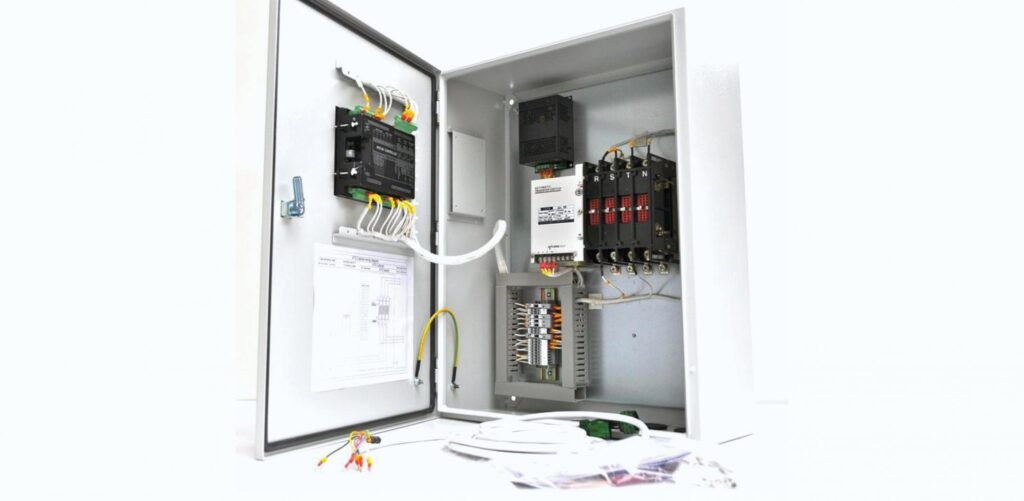
What Does The Transfer Switch Do?
In simple terms, a transfer switch is a permanent switch that connects to your power box that changes the power load between two sources. For permanent sources of backup power, this happens automatically when the first source of power becomes unavailable. This is ideal because it seamlessly keeps the energy flowing with minimal delay. In the case of a generator for residential whole house power use, the generator is plugged into the transfer switch located on the circuit panel. When the generator is turned on, the transfer switch changes the load from grid power to the generator.
What Generators Need A Transfer Switch?
Standby generators for homes and businesses almost always need one. Since they are always waiting for when the power goes down, it is important to have this extra piece of equipment to keep the power flowing without downtime. However, portable generators don’t strictly need a transfer switch, but it is usually a good idea. The biggest benefit of having a transfer switch in a residential setting is that you gain the ability to power things up via your circuit breaker panel instead of having to use extension cords. This includes hardwired devices, such as your dishwasher, hot water heater, air conditioning, and ceiling fans. All you have to do is plug the portable generator into the transfer switch and you’re good to go!
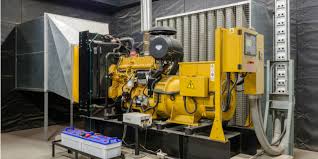
How a Transfer Switch Works
Skipping the transfer switch and connecting your portable generator directly to your electrical service panel could fry appliances, endanger utility workers who might be working on power lines, or damage your generator. Plus, you don’t always know when power is restored, unless you see your neighbors’ lights go on.
A transfer switch lets you easily and safely power what you need most—your refrigerator, your furnace or boiler, a sump pump, and more. Think about it: Power to these devices can come from your utility or your generator but not both. The transfer switch works by having a dedicated set of switches for each of the circuits you want to power.
With a transfer switch (about $500 to $900 to install, including labor), you’ll have one connection to make—plugging one end of a cable into the portable generator and the other into a dedicated box connected to the transfer switch.
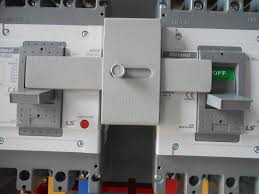
How Does a Manual Transfer Switch Work?
When the power goes out, everything will go dark if you have a manual transfer switch. You’ll need to grab your flashlight and go out to the generator to start it manually and connect it to the transfer switch. Then you’ll need to switch your home or business over to receive power from the generator. When utility power comes back on, you need to manually switch the power back to the utility company and turn off the generator.
How Does an Automatic Transfer Switch Work?
As the name implies, everything is automatic with this type of transfer switch. The power may go out for a second or two, but the transfer switch senses this and automatically signals your generator to start up. Then the transfer switch connects your home or business to the generator. When utility power comes back on, the transfer switch disconnects the power supply from the generator and shuts the generator back off until the next power outage occurs.
What is the difference between an interlock and a transfer switch?
An interlock needs a human to operate it. They cost less, in general.
A transfer switch can be (and usually is) automatic. They cost more, in general.
An interlock setup can usually feed power to any circuit in the panel (but if you overload the generator input the generator breaker will trip.) This is also controlled manually, by the user turning other breakers off and on.
A transfer switch setup can only feed specific circuits, since automatic operation means there’s nobody to turn off circuits to shed load, so the loads connected to the generator must be less than or equal to what the generator can supply, if all are operating.
Solutions To Squirrel Problem
Why Should Squirrels Be Treated?
When squirrels enter a loft space, they can cause structural damage by tearing up loft insulation for bedding, chewing timbers, pipe work and stored items, and posing a fire hazard by stripping insulation from electrical wiring and/or chewing through cabling which can cause fires or electrical problems. Insulation may be pilled into large balls for the nest or drey. They may also be very noisy, and if they drown in uncovered water storage tanks, may contaminate the water supply. For these reasons, it is important to keep squirrels out of lofts. Squirrels in gardens are also destructive pests, eating plants, bulbs, stripping bark and will eat bird’s eggs and chicks. Grey Squirrels are classed as vermin. It is illegal to release a trapped Grey Squirrel.
Preparation Prior To Treatment
Don’t attempt to block any entry holes prior to treatment. If you do this they may cause further damage trying to get back into their ‘home’.
Treatment
The treatment of a Squirrel infestation is much more difficult & time consuming than the other rodent pests. Control of Squirrels in outside areas can be carried out in some circumstances but needs to be carefully considered as once a family of squirrels has been removed from an area that territory will be re occupied sooner or later. How soon this happens depends on the population of the surrounding area. They will prey on birds nests, eating eggs & young. Feeding squirrels in gardens will increase the density of the population possibly harming other wildlife. To control them we will use trapping & poisoning. The technician will use traps that kill the squirrels. Legally these types of traps have to be checked daily so can only be used if you are able to do so. If you see or hear an animal caught in one of the traps that is in distress you must phone our office.

Signs Of Squirrels In Your Home Or Business
Our figures suggest people have more problems with squirrels during the spring and autumn when they’re looking for food.
These are the seven signs easiest signs to spot when looking for evidence of squirrels in your home or loft.
- Scratching and rustling sound from your loft or a wall cavity
- Spotting droppings in the loft – although you might need a pest controller to identify these droppings
- Smell of urine in the loft area might indicate the infestation has been going on some time
- Spotting lots of other squirrels around your property, particularly near your roof or on high fences
- Fruit and nuts being stolen from bird feeders, or the feeders being disturbed/knocked over
- Bark being stripped from trees in your garden
- Holes in vents or damage to your insulation foam.

Combination of Traps, Baits, and Repellents
Use a combination of traps, bait boxes, and two different repellents in the same pattern as numbers one and two above, but alternate the traps and bait boxes at random. Sun Tzu, in his seminal work, The Art of War, advises us to know our enemy, in this case, squirrels.
Their natural inquisitiveness will lead them to investigate each time a trap turns up where a bait box used to be and vice versa. Alternating liquid repellents will further confuse the squirrels, increasing the chances of them being funneled into the areas where you’ve set your traps and bait boxes.
An All Repellent Method
An all-repellent option, this one uses the ultrasonic spikes together with multiple liquid repellents to drive the squirrels away from your hard and garden.
The spikes have to stay where you place them. Just make sure that none of them are on the same tempo or beat, thus you always have one or more them sounding while others are quiet.
Spray the repellents around all the trees and poles in the yard as well as around the spikes. Squirrels will sometimes investigate the source of the irritating noise in an attempt to stop it.
Liquid repellents will aid in keeping them away, reinforcing their perception that something bad is taking place and they should head for greener pastures somewhere else.

Squirrel Control Recommendations
- Removal of any diet source: bird seed for example, because they attract the squirrels is the first order of business.
- Using gutter guards and covering downspouts will reduce the number of squirrels that are entering through the rooftop and facia boards.
- Live trapping method of trapping squirrels is the only way to remove unwanted squirrels. Catching a squirrel is really the only way to get rid of squirrels in your attic, once they have chewed holes. It is important to seal up and repair all entry points after trapping the squirrels, so they no longer have access.
- Locate the trap along the path of entry and places of known foraging activity.
- Go about 4-5 miles away to relocate the squirrels, or it will find its way back to your area.
- You may want to consider local ordinances for trapping squirrels, in that they differ. Sometimes a professional trapper with a nuisance control license is needed to not only capture the squirrel but relocate it as well.
How To Get Rid Squirrels In The Attic
The following recommendations combine advice, rules, and tips to hasten the elimination of squirrels from the attic:
- Take away foodstuff, the smell is likely to attract squirrels. Clean the attic from everything that can be used for nesting: paper, old wallpaper, wool things, etc.
- Place your pets’ hairs around the attic. The permanent feeling of an enemy will frighten the pests.
- Dampen cotton cloths in ammonia and place them wherever squirrels can gather. The sharp smell will drive the animals away. After your tattle tails disappear, switch on a ventilator or air ionizer (purifier) to clean the air.
- Place around the attic small cotton balls or pieces of fabric dampened in naphthalene: near boxes, in corners, wherever else you’ve seen rodent activity. To increase the repelling impact, combine it with other types of rodent-repelling substances or essential oils. But be careful: naphthalene is highly flammable and classified as a dangerous fire hazard.
How To Identify Bed Bugs
Preparing Your House for Bedbug Treatments
Bedbugs can be difficult to eliminate when they infest your home unless you do your part by cooperating with the pest control company. The following tips will help YOU and your pest management company get rid of bedbugs quickly:
- Don’t move any of your belongings to another home during or before the treatment unless you know they are not infested. You might spread bedbugs to another home or to your car or workplace in a backpack or box and then re‐infest your home after it has been treated. Move as few items as possible and have them checked for bedbugs (or heat them) before removing them.
- Wash all sheets, blankets, pillowcases, and other bedding in hot water. Place the items in a dryer set on the highest setting that won’t damage the items. Dry the items thoroughly and then place them in trash bags. Keep them separate from items that may be infested.
- Wash all clothing in hot water and then dry on the highest setting allowed for the clothing. Clothing that can’t be laundered and dried (including coats and jackets) can be dry‐cleaned or need to be inspected carefully. Do not place clothing in infested rooms/areas until treatment has been completed and the bedbugs have been eliminated.
- Place curtains, pillows, towels, stuffed animals, etc. in the dryer set on the highest setting that won’t damage the items for at least 30 minutes. Double bag these items immediately after drying.
- Carefully inspect all Items that cannot be washed: books, electronics, picture frames, plastic toys, etc. If insecticides are going to be used, place children’s toys into plastic bags or storage bins (only if they are bedbug free). If heat is used, the pest control company may want these items left in place so they are exposed to the heat treatment.
- Store cleaned and dried items in plastic bags until your home has been treated and the bedbugs eliminated.

What Does a Bed Bug Bite Look Like?
Bed bugs love fast food. They like to feed and then scurry back to their hiding places. They try to avoid crawling all over their food for fear of waking it/us. They usually bite the bare skin they find closest to the mattress. That’s why it’s common to see two or three bite marks in a line along the skin that was in contact with the mattress or pillow. When this happens it’s time to learn how to get rid of bug beds fast.
Everyone reacts differently to a bed bug bite. Some will develop small itchy bumps like mosquito bites; others will suffer from large, puffy red lesions the size of a quarter. A lucky few will have no reaction at all. Other signs of bed bugs are bloodstains on your sheets, pillows and blankets. Are you scratching yet?

Vacuuming To Capture Bed Bugs
Vacuums can be helpful in reducing the numbers of bed bugs in certain locations especially where there are groups or clusters of bed bugs. Vacuuming is not 100% effective, but will help capture bed bugs. There are some key tips that you should follow to make sure you capture the most bugs possible and that you do not spread the infestation.
- Make sure you make the suction as strong as possible. Use a crevice tool attached to the vacuum. Bed bugs have the ability to cling to fabric and wedge themselves in cracks and crevices.
- Make sure that you concentrate on those areas.
- Do not press to hard against the fabric. There is a chance that you can “flick” bed bugs and eggs off a surface instead of capturing them.
- Bed bugs can survive a trip through a vacuum hose. it is important to remove the bed bugs from the vacuum when you are done so that they do not escape.
- When you are finished, remove the vacuum bag and seal the bag with tape. Then place the vacuum bag into a plastic bag and seal this outer bag. This bag can be disposed in the trash.
- If the vacuum does not contain a bag, empty and discard the contents in a sealed plastic bag. Wash the removable container in hot soapy water to ensure any remaining bed bugs are killed. There is usually a filter attached to this container. This filter will have to be washed, frozen, or discarded and replaced by a new filter. DO NOT use water on electrical components of the vacuum.

Proper Bagging Technique
The bugs in the bedding or clothing nearby the bed must be quarantined and destroyed using the heat of your clothes dryer. To be sure bedbugs cannot escape from the bags, the bags should be tied as follows:
Step 1: Place items in a large sturdy garbage bag, to fill the bag about ¾ full.
Step 2: Twist the bag as far down as you can.
Step 3: Tie a single knot and tighten it.
Do Not:
- Use twist ties
- Use the ‘easy-tie’ garbage bags
- Use the drawstring type garbage bag
Step 4: Once the fabrics have been put through a dryer for at least 20 minutes, place them in a new bag. Be sure to discard of the old bags immediately in an exterior garbage bin.
Step 5: Do not put clothing back in dresser drawers nearby the bed. It is best to keep the clean clothing in bags in a separate room until the final treatment is completed.
Think you have bed bugs? Here are some dos and don’ts.
DO NOT throw away your mattresses and/or furniture.
Doing so will result in only two things:
- You will waste a lot of money.
- You will make the problem worse because bed bugs and their eggs will spread throughout your home as the furniture is carried out.
DO NOT move yourself or your furniture from room to room.
Bed bugs will not go away if you sleep in another room. Instead, they will follow you and create new colonies wherever you move. Remember:
- Always stay in the same room while your home is being treated for bed bugs.
- If you must move a small item such as a child’s stuffed toy, run it through the dryer at 120 degrees prior to moving it to another room.
DO NOT attempt to treat bed bugs yourself.
Do-it-yourself treatments for bed bugs are ineffective at best, and dangerous at worst.
- Many products that are advertised for home use and sold in hardware stores are not actually safe. Many contain chemicals which can cause physical harm to you and your family members.
- Insecticide sprays and “bombs” WILL NOT kill bed bugs. All they do is cause the bed bugs to relocate. If sprayed, bed bugs will flee the immediate area, meaning they will resettle elsewhere – all over the rest of your home.
DO NOT assume you are the only one being bitten.
People often rule out the possibility of bed bugs because they think no one else in the household is being bitten. Unfortunately, this is faulty logic. If a housemate or family member is not visibly experiencing bites, by no means should you rule out bed bugs. According to the research:
- About 30% of people do not display ANY symptoms when bitten by bed bugs.
- The other 70% exhibit symptoms that range anywhere from barely noticeable, mildly itchy spots to large, painful red welts
DO use bed bug encasements for mattresses and pillows.
Doing so will prevent bed bugs from entering and breeding in your mattress, pillow, or box spring. Conversely, bed bugs that are already inside will be unable to escape and bite you at night.
Transmission Repair You Can Depend On
TIPS WHEN CHOOSING CAR TRANSMISSION REPAIR SERVICE
While a big portion of the population may own their own vehicle that certainly doesn’t mean that all of us are experts in identifying or repairing the problem, in the event of an unexpected breakdown. Cars and especially, transmissions are complicated and should only be handled by a trained expert who understands the ins and outs of car transmission repair. Therefore, it’s important to follow these three tips when searching for a car transmission repair service for your vehicle.
Find a mechanic BEFORE your transmission goes out (or even, before it starts acting up). Many people make the fatal mistake of waiting to find a repair shop until their vehicle is broken down. This way, they have no other choice, but to go with the cheapest (which could be the worst option)…or the closest option (which could also be the worst). Don’t wait until your car transmission actually needs repair — get a reliable transmission repair shop you can trust, today! There are several ways to find a reputable mechanic or repair shop who is experienced in car transmission repair. A professional repair shop will have the capabilities and the expertise they need to solve even your most difficult transmission problems, in an affordable and effective manner. If you choose an experienced transmission repair shop, you will have the benefit of getting good quality work with good, long-term results and you can spare yourself from being cheated by inexperienced service personnel or mechanics.
Look for money-saving promotions, coupons and other discounts. Most car transmission repair shops will advertise their discounts, post coupons or run other promotions in the hopes of obtaining your business. Check through the local newspaper — many repair shops offer special promotions or coupons to discount-savvy shoppers through the local newspaper. If you’re paying for an expensive transmission repair — even a discount of 10 to 20 percent can save you a lot of money. We offers discounts to, seniors and military personnel, as well as, printing several coupons to make your car transmission repair, more affordable.
Get everything free. Okay, well maybe you won’t be able to get the actual repairs free, but there are several “free offerings” that you should look out for when shopping for a car transmission repair service. Some of the free options include, a FREE estimate, a FREE pick-up and delivery service (as long as you are within a pre-determined distance) and FREE diagnostics services. Some car transmission repair shops also offer FREE routine check-ups and FREE fault-detection services, as well
If you consider yourself a smart consumer, you know that playing it smart is about saving as much money, but getting the most bang for your buck, as you can — is definitely the way to go. Keep these simple tips in mind, the next time you are choosing a car transmission repair service for your manual transmission vehicle
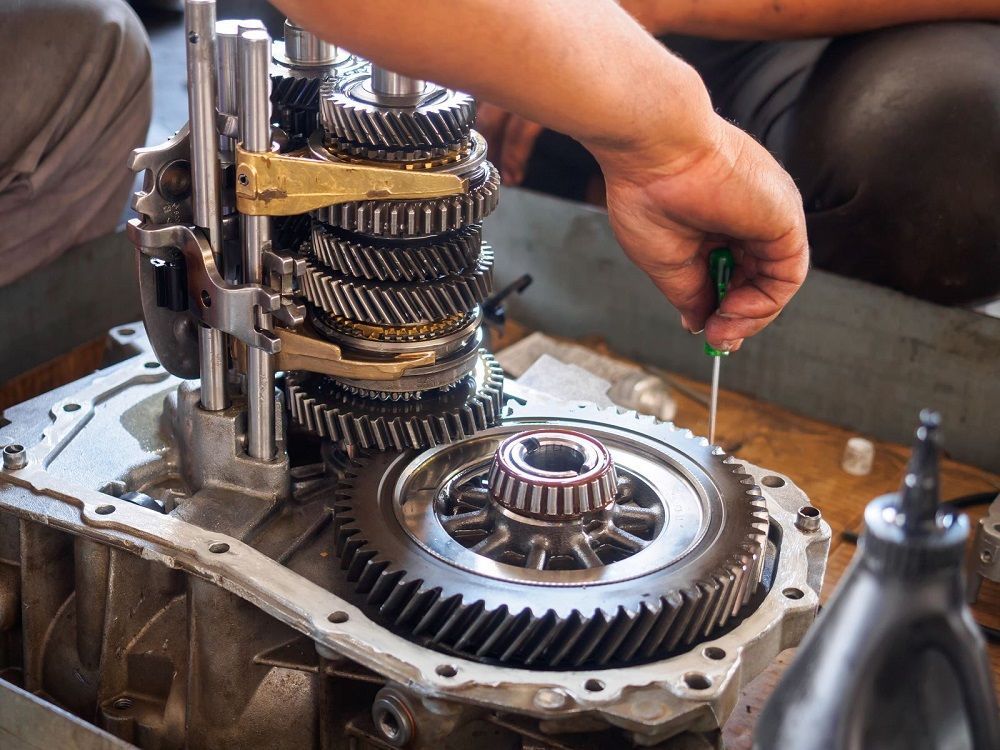
Tips for Choosing the Best for Auto Transmission Repair Service
Many people now have cars and they know pretty well to take care of their vehicles. However, when there are technical problems in the engine of the car, the only way to make the car rolling again is to avail services from the competent service provider, who can deal successfully with auto transmission repair and bring the car into original working condition again. Nevertheless, there may be numbers of auto transmission repairing service centres in a locality and the car owners need to select someone, who has thorough knowledge about the repairs of car transmission. It is better to keep in touch with any local auto transmission repair service centre or mechanic, for meeting any urgent requirement in near future
Look out for Recommendations – It is best to ask the close friends or colleagues or other family members about the references of suitable service centres providing auto transmission repair in the same locality. These people can answer from their own experiences and may recommend the service providers that have satisfied them with best car transmission repairing works.
Check out the Customers Reviews Online – Every auto transmission repairing centre nowadays has their own website, which can be checked for going through the testimonials or reviews posted by their previous customers, whether they are satisfied with the auto transmission repairing services of these agencies or not.
Compare the Quoted Estimates – Ask every shortlisted auto transmission repairing service provider of the locality free quotes, after they check the exact problem that needs to be rectified in the concerned car and be ready to provide the estimate for auto transmission repair of that car. Then the customer can compare all the given quotes and choose the most affordable one as per his budget and the quality of the service, though, decide only after judging other qualifying factors too. If any service provider is offering any discount or coupon on their specific services, the customer should have knowledge about it for availing the scope of lowering his expense on car repairs.
Know about Qualification of Mechanics – It is better to check whether the auto transmission mechanics of the repairing service provider are duly certified on dealing with all types of auto transmission repairing works from any reputed institute or the car manufacturing companies. Moreover, these mechanics and the service provider company should have a valid license from the local authority for handling auto transmission works.
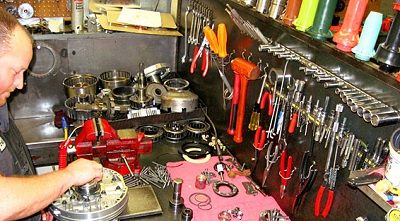
How to Choose Good Transmission Service Repair Shops
Are you looking for good and honest service providers or repair shops for your car transmission? Finding a perfect service provider can be a daunting task if you are doing it for the first time. You may have heard some cases about bad transmission repairs. The transmission repairs can be cheap, provided you choose the reliable repair shop, such as Borst Automotive. Your car cannot function without proper transmission. When you know you are having problems in your transmission you need to repair the engine. If you do not get it done on time from a good service provider, you have to pay for that at a later stage where the car can completely breakdown. Many important things are there, you need to understand when you look for the repair shops.
Finding a perfect service provider can be a daunting task if you are doing it for the first time. You may have heard some cases about bad transmission repairs. The transmission repairs can be cheap, provided you choose the reliable repair shop. Your car cannot function without proper transmission. When you know, you are having problems in your transmission you need to repair the engine. If you do not get it done on time from a good service provider, you have to pay for that at a later stage where the car can completely breakdown. Many important things are there, you need to understand when you look for the repair shops.
Ask for referrals: You can start with asking referrals to your friends, family, and co-workers for some good contacts, which they have used. It is possible that you will get some good references, which can make your life simple. You can make a list of nearby service shops and see if you have the shop, which is referred to you.
Experience: Once you shortlist some good options then you check with all the other things such as the experience of the mechanic who is going to help you with your transmission service
Know-how: With experience, they should also have the right knowledge about the particular engine type. As different car companies use different technology in engines. They should be able to identify the problem and work accordingly. They should help you with all the repair and servicing works and with genuine parts if needed.

How to Find a Transmission Repair Shop
Transmission repair is anything but cheap, and when you decide to take your car to a repair shop, you better make sure you pick a reliable shop that suits your budget. When transmission repair costs can range anywhere from $1000 to $4000, you don’t want to pay for a slipshod service and end up with a transmission that will only develop problems again. A poorly done repair can end up costing you more in the end, which is why you shouldn’t choose the cheap option all the time. You don’t want to overpay either, so an honest, high quality, friendly transmission repair shop is what you want. There are a few things you can look for in a shop before you decide to bring your car in for repairs.
Ask around for recommendations – Chances are your family and friends have experienced car problems before, and they probably know some trustworthy shops around. Ask people you know for their recommendations of repair shops that offer fair prices, high quality repairs, and awesome customer service.
Avoid cheap or over the top services –When looking for a transmission repair shop, look for one that offers prices in between too expensive and cheap. You are going to want to get estimates from multiple shops first before you decide on one. Expensive shops are often just ripping you off and might be dishonest about what they are doing to your car. They might be tacking on a bunch of services that you don’t need just to increase the bill. On the other end, cheap is cheap. If you are looking for repair shops that offer cheap prices, chances are you’re going to get cheap repairs. Avoid shops that offer remarkably low prices, because oftentimes they are lowering the price just to get the job, their quality of work is sloppy, or they will mark up the price once they’re finished.
ATRA membership – ATRA stands for the Automatic Transmission Rebuilders Association, and they’re an organization that specializes in transmission repair. ATRA offers membership to shops that meet their Code of Ethics, which includes honesty, professionalism, and friendliness. ATRA accredited shops also offer a warranty program for repairs, which can range from 12 to 36 months. You can find an ATRA accredited repair shop here at their site.
Professionalism – You can usually tell how seriously a transmission repair shop takes their work by the way the shop is portrayed, in ads and appearance. A clean, organized shop is indicative of a high quality organization. You should also look for training, certification, and memberships in organizations such as the Better Business Bureau. Avoid shops that appear sleazy or a bit off. (The commercial below is a parody, but you get the point.)
Transmission Repair Options
Are you faced with a failed transmission and the dilemma of deciding which transmission repair option is best for your vehicle? It’s a tough spot to be in but here’s good news: you have options aplenty.
Depending on the age, make, and model of your car, light-duty truck, van, or SUV – and whether your vehicle features an automatic or a manual transmission – your decision will likely be determined by a multitude of factors including cost, quality, and when you need your wheels back.
A New Transmission
Many people believe when they buy a new transmission to have installed in their vehicle, that they are getting a brand new factory-made one. That is usually not the case. Brand new transmissions are not available from the manufacturer, your automotive dealer, or any other source. New transmissions are only used in the production of new cars and trucks. Thus, when you purchase a “new” transmission, you are, in fact, getting one that has been remanufactured. Be advised the price tag affixed to a so-called new transmission and a remanufactured one may not be the same
A Rebuilt Transmission
Whether you call it a rebuilt, refurbished, reconditioned, or overhauled transmission, the result is the same. A rebuilt transmission is a transmission that has been disassembled and inspected, all the worn or damaged parts are replaced, and then the transmission is reassembled to factory specifications. Some components will be replaced as part of this process: new gaskets.
The term “rebuilt” is used in a shop setting where the customer’s transmission is removed from the car, rebuilt and then reinstalled. It is a custom process performed by an experienced, technology-savvy technician. One of the major benefits of having your transmission rebuilt is that often there are new updated components that can be installed. These updated components often address common weak points of the transmission; thus they are less likely to fail in the future
Choosing The Best Accountant For Your Business
Tips to Choose an Accountant for Your Small Business
Irrespective of the industry your small business falls into, you cannot understate the value of a good accountant. You can get a bookkeeper for basic accounting services, an accountant who has a degree in accounting for more complicated accounting and payroll services, or a certified public accountant who can help with tax planning and also prepare taxes. All of these people can share strategic advice for business growth.
Know What You Need
But before you choose an accountant, you need first to understand the kind of work or responsibilities you want the accountant to handle for your business. If you need monthly financial statements and bookkeeping tasks, a non-certified accountant or bookkeeper can be hired. But to get tax planning advice, tax returns prepared, or audited financial statements, you need a CPA or certified public accountant.
Look For Small Business Experience
Beware of big accounting firms. You need someone who works with small businesses, and it could also be a bonus if the accountant works with businesses in your industry. While working for clients from a specific industry for a long time, some accountants get to know the related challenges very well. If the accountant has been dealing with several clients like you, he/she can guide you well about making the right financial decisions for the growth of your company.
Decide Whether You Need an Accountant or a CPA Firm
Many small business owners start by managing their taxes on their own. Unlike the past, it has become much easier for business owners to do simple bookkeeping tasks with the help of advanced software like QuickBooks, Xero, Sage, and similar others.
Ask for Recommendations
One way to find an accountant for your business is to ask other business owners about whom they use. Nothing is better than a recommendation from one of your peers. Ask about their experience of working with their accountant or bookkeeper, and get some idea of the budget you’ll need to have to pay for these services

How to choose an accountant for your small business
Picking the right accountant is a vital business decision, so you’ll need to arm yourself with the right assessment questions. Charlotte Simmonds hears the experts’ views on what these should be
Choosing the right accountant is one of the most important decisions a small business can make. A good one can save you time and help your business grow; a bad one could cost you much needed money. Yet with thousands to choose from, it can be a daunting call to make. So when it comes to selecting and working with an accountant, what are the questions every small business owner should ask so as to make the most informed choice?
Why should I hire you?
Hiring an accountant can be “even more important” than taking on a member of staff, says Clive Lewis, head of enterprise at The Institute of Chartered Accountants in England and Wales (ICAEW). “If you get the wrong person, you can miss out on things you should know,” he explains, “and that can be very costly.”
Charlotte Chung, senior policy advisor at the Association of Chartered Certified Accountants (ACCA), says the key thing to query during the hiring process is how the accountant will add financial value to your company. “Look for someone who can act as a business partner. You want them to demonstrate the skills and knowledge of supporting a small business.”
Therefore, take your time with research. Both Chung and Lewis advise meeting with a least three candidates before making a final choice. There are a few fundamental questions that must be asked during these meetings

How to Choose an Accountant Who Is Also an Advisor
Accountants help you keep an eye on major costs as early as the startup stage, a time when you’re probably preoccupied with counting every paper clip and postage stamp. Accountants help you look at the big picture.
In fact, perhaps no other business relationship has such potential to pay off. Nowadays, accountants are more than just bean counters. A good accountant can be your company’s financial partner for life — with intimate knowledge of everything from how you’re going to finance your next forklift to how you’re going to finance your daughter’s college education.
These four disciplines often overlap. For instance, if your accountant is helping you prepare the financial statements you need for a loan, and he or she gives you some insights into how certain estimates could be recalculated to get a more favorable review, the accountant is crossing the line from auditing into business advisory services.
Services
Most accounting firms offer tax and auditing services. But what about bookkeeping? Management consulting? Estate planning? Will the accountant help you design and implement financial information systems? Other services a CPA may offer include analyzing transactions for loans and financing; preparing, auditing, reviewing and compiling financial statements; managing investments; and representing you before tax authorities.
Personality
Is the accountant’s style compatible with yours? Be sure the people you are meeting with are the same ones who will be handling your business. At many accounting firms, some partners handle sales and new business, then pass the actual account work on to others.

Questions to Ask When You Choose a Tax Accountant
If you are considering early exercising of a significant number of options or are thinking about selling options in the public market for the first time we highly recommend retaining a reputable tax accountant. We realize this means you will incur a fee, but it is highly justified given the risk you take on incurring significant unforeseen taxes if you don’t consult a great tax accountant. It is not as easy to quantify the savings from hiring a tax accountant as it is from hiring an estate planner (see our recent post by Abe Zuckerman regarding Estate Planners), but it’s just as necessary. Like most people, you’re probably not sure how to choose a tax accountant.
Do they have expertise in areas relevant to you?
If you work for a technology company that issues stock options or RSUs, then make sure your accountant has worked with plenty of other clients in the same situation. Better yet, make sure she has clients who work in more senior positions than you because with seniority usually comes more complexity. A true professional will tell you if she is not appropriate for the job, either because your return is too simple to warrant her help or too complex due to her lack of relevant experience (a common example where a lot of experience is needed would be the area of oil and gas partnerships)
How many years of individual tax experience do they have?
An appropriate tax advisor should have a minimum of five years experience doing individual tax returns. Experience with a large firm is usually better than a small firm because she will have been exposed to a broader set of issues and her training should be better
What license(s) do they have?
It would be preferable for your tax preparer to have a CPA (Certified Public Accountant license) although it is not technically required. Tax Attorneys should have a LL.M in Tax (an advanced tax degree for an attorney).
Do they have an advanced degree?
A CPA can do tax work even if she hasn’t had any special training in tax. I know that sounds crazy. That’s why it might make sense to look for someone with more advanced training like a tax specialty within an MBA. My tax advisor, Bob Guenley (who has written a number of guest posts for us), told me he only took one tax course in college and learned a lot on the job, but getting his MBA in tax made a whole world of difference. His MBA included individual, partnership, corporate and fiduciary tax, which is more than one needs if she wants to specialize in individual tax, but it’s awfully nice to have someone advise you who has that broad perspective. An advanced degree isn’t necessary if your accountant has taken advanced classes in personal tax as part of her ongoing Continuing Professional Education requirement. There is no correct answer to this question. I just think your tax advisor/preparer needs to have taken several courses emphasizing personal taxes.

Choosing an accountant
When choosing an accountant, look for one that will suit you or your business. Some accountants specialise in tax returns for individuals or for businesses in a particular industry, and others are experts in a particular area of tax.
If you’re an employee
An accountant can be useful if you have multiple jobs or income from investments. They can also help you claim all the tax deductions you’re entitled to and make sure your tax return is correct.
If you work for yourself
If you work for yourself as a sole trader, contractor or freelancer, an accountant can help.
Help with your business
If you run your own business, an accountant can help you set up and maintain your financial records. They can also help you meet your tax obligations.
Finding the right accountant
A good place to start looking for an accountant is recommendations from people you know
The Right Way To Handle Trenchless Pipe Replace
How to Choose the Best Trenchless Sewer Repair Professional
Facing a sewer repair or plumbing project can be intimidating. Many homeowners are not seasoned professionals with years of plumbing experience, and rightfully choose to hire a professional to help tackle their sewer repair.
Find a Leader in Trenchless Sewer Repair Technology
When selecting a trenchless sewer repair professional, it’s important to find a professional who is well-versed in the latest trenchless sewer repair technologies.
There are many trenchless sewer repair methods, including pipe bursting, slip lining and cured in place pipe (CIPP). Pipe bursting, however, is seen as the superior option among these methods as it’s environmentally-friendly, long-lasting and offers a quick turnaround and less disturbance to the surrounding area.
Check for Proper Licenses & Certifications
When looking for a sewer repair professional, it’s important to check for the proper licenses and certification. Every sewer repair company should have the required certifications to install, repair and operate on sewer systems, sewer laterals, and other related plumbing issues.
Licenses
C-36 License. This license is a General Plumbing license all contractors are required to have to contract plumbing work within the footprint of a home’s interior.
C-42 License. This license allows contractors to work on sewer systems and other similar pipes such as storm drains or septic tanks on private property and public right of way.
A- License. This license is required for contractors who need to have specialized engineering knowledge and skill to work on fixed works and any public sidewalk or street.
B-License. This license is a General Building license required for any structures being built or rebuilt
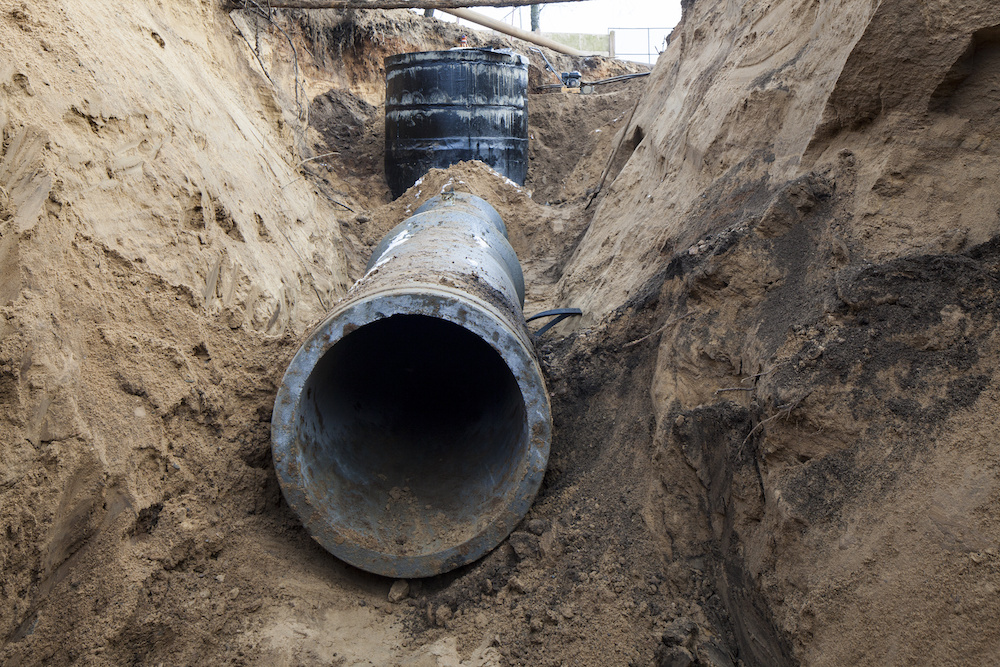
The Benefits of Choosing Trenchless Sewer Line Repair
Traditional methods of repairing damaged sewer lines can mean disrupting walk and driveways, digging up lawns, and creating a mess. New technologies provide a way to repair the offending length of pipe at your home, business, or commercial property
Faster, Less Messy than Former Methods
When sewer lines fail, you need a fast solution to the problem and traditional methods of sewer line replacement can be as messy as the initial sewage backup. Equipment is often required to dig up the sewer line, replace it, and cover it up. In many instances, this may require tearing up sections of driveway, walkway, landscaping, and lawn.
Benefits of Choosing Trenchless Sewer Line Repair
Time is a factor for all, and the older methods of lateral sewer line repair require two to five days to carry out. This means that you may have to deal with the problem for several days. Some trenchless sewer line, repair jobs may be finished in one day. Getting the job done in a timely manner will help you get back into your routine in Sacramento and you will not need to call the landscaper or make a trip to purchase new plants.
Lower Cost Overall
The plumber you have called may replace the lawn they removed to access the sewer line but they will probably not replant your prized rose bed. The money saved on restoring damage due to the sewer line failure may outweigh the higher cost of trenchless sewer line repair. When you factor in the costs of replacing plants and lawns, trenchless sewer line repair can be the best fix and least costly method to get your water flowing freely.
Less Invasive
Replacing a sewer line with the conventional method requires that the leak is located, the yard trenched, the bad section of pipe replaced, the trench refilled, and sod replaced. When choosing trenchless sewer line repair the process is a little different.
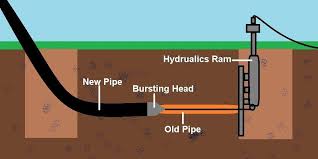
How Affordable is Trenchless Pipe Repair Vs Traditional Repair?
If there’s one problem that every homeowner dreads, it’s the prospect of discovering faulty or damaged pipes somewhere on their property. Whether it’s a water or sewer line, broken pipes can cause a number of problems if they’re left unattended for too long. Traditionally, the digging required to repair or replace these pipes was a major undertaking that could last for several days and inflict significant property damage. Today, however, trenchless technology allows experienced plumbing contractors to do the same work in a fraction of the time with minimal digging.
Traditional Pipe Repair
On paper, traditional sewer pipe repair solutions are slightly less expensive than trenchless repair solutions. As this method of pipe replacement is more common, homeowners typically have many contractors to choose from.
The cost of trenchless technologies varies based on the method utilized. Two commonly-used trenchless technologies used for pipe repair/replacement are:
Lateral Pipe Lining: Sometimes called cured-in-place piping (CIPP), this technology uses existing pipe, adding a layer of epoxy resin to re-line the pipe, repairing cracks and closing gaps to prevent leakage and soil intrusion—basically creating a new pipe within the existing pipe. Costs for lateral pipe lining can range from $80 to $250 per foot.
Pipe Bursting. This technique uses a pneumatic or hydraulic head that destroys the old, broken pipe and drags in a new pipe to replace it. Pipe bursting tends to be a bit less expensive than lateral pipe lining, with costs ranging between $60 and $200 per foot of pipe replaced.
Hidden Costs of Traditional Pipe Repair Vs Trenchless Repair
There are a number of additional costs to consider when making repairs to a pipe that the sticker prices listed above simply don’t cover
For example, traditional trenching repairs don’t always include the cost of excavating the old pipe. Trenching can cost anywhere between $4 and $12 per foot; if the job is especially complicated, it may even require another contractor to perform the work. Also, if any large, heavy objects are located over the sewer pipes, there may be separate charges for relocating them before and after work is completed.
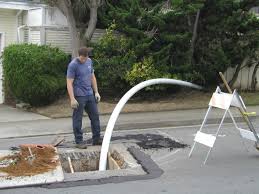
Steps to Choosing a Pipe Repair Method
As home owners we expect to replace our roofs, paint our homes, and maintain our landscaping. While these things are clearly seen to the eye, we tend to overlook the things we don’t see everyday, namely, our pipes! When a sewer pipe problem rears its ugly head what should you do? Here are three steps to solving your sewer pipe problems.
Low Quality V.S. High Quality | Why the cost difference?
A video inspection for a home can run anywhere from $99-$650 and for condominiums or commercial buildings the cost can be substantially higher due to the size of the job and difficulty to reach the pipes in question. The reason for the price difference has to do with the equipment that the company is using and what they provide you with after the inspection. Some sewer cameras cost upwards of $15,000 and produce HD footage in full color and are self-leveling (the footage stays upright), hence the greater cost. Other sewer cameras can be rented from a local home repair depot for an hourly rate and produce low quality footage, hence the lower cost. Some low quality cameras don’t even have recording capabilities, believe it or not. Sometimes, a low cost or free sewer inspection may require the customer to purchase pipe cleaning, or the company may not even give you a copy of the video (this may be because the camera used does not have recording capabilities).
Do I really need to pay for a high quality sewer video inspection?
In one word, yes. A high quality video inspection will be useful for both conventional plumbers and pipe lining contractors to give you a quote from. The reason that a pipe lining contractor especially requires high quality sewer video inspection is due to the nature of the work. Pipe lining is a very technical procedure, much more so than conventional replacement. The comparison of a low quality to a high quality video inspection can be likened to an X-ray as opposed to an MRI. An X-ray is limited to examining a few body conditions only, takes a few seconds to complete, and is very cheap. An MRI on the other hand is more versatile than the X-Ray, is used to examine a large variety of medical conditions, is much more time consuming, and justifiably more costly. Similar to an X-ray, a low quality video inspection often is done simply to identify obvious damage with the intent to replace the problematic pipe or clean it. A high quality sewer video inspection on the other hand will provide both conventional and pipe lining contractors with the details needed to prepare an accurate quote and make the necessary repairs.
What Information should a sewer video inspection include?
Pipelining Technologies, Inc. utilizes the best sewer cameras in the industry that produce clear footage and record key information regarding the problematic pipes. When performing a sewer inspection we take note of
Require a Plumbing Deficiency Report and Line Drawing
After you have had a video inspection done, the professional who did the work should give you a deficiency report and a not-to-scale line drawing of your drainage system. The deficiency report should call out areas in the sewer line that have cracks, tree root intrusion, channelling, blockages and so on. You may find that the main line has the problems and the vertical stacks have some time left before they need to be repaired or vice-versa.
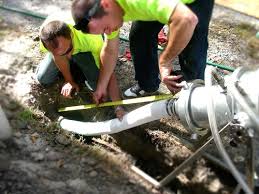
TYPES OF TRENCHLESS SEWER REPAIR METHODS: WHICH ONE IS IDEAL?
The repair of sewer lines is time-consuming, costly, and disruptive to day-to-day activities. Traditional sewer repairs involve trenching. As such, you have to dig deep trenches in the street next to your home, driveway, pavements, car parks, or your back or front yard. Instead of rerouting traffic and paying lots of money to dig up such areas, you can opt to use trenchless sewer repair methods to avoid disruptions.
THE PIPE BURSTING METHOD
The pipe bursting trenchless sewer repair method involves inserting and pulling high-density polyethylene pipe (HDPE) through an old damaged pipe. The inserted pipe bursts open or fractures the damaged pipe without removing it. You have to dig holes on both ends of the lateral pipe before inserting the HDPE pipe. You have to connect a ‘bullet’ or ‘bursting’ head to the HDPE pipe and pull it through the old pipe.
SLIP LINING, PIPELINING, OR CURED IN PLACE PIPE (CIPP) METHOD
The slip lining sewer repair technique allows the installation of an epoxy liner into a damaged lateral sewer line. The repair creates a pipe within another pipe. The sewer lining or ‘cured-in-place pipe’ is tube coated with flexible resin. This lining gets pulled through the broken sewer line and inflated to harden and create a new pipe lining within the old damaged pipe.
IS THE CHOSEN METHOD FRIENDLY TO THE ENVIRONMENT?
Pipe bursting is a sewer repair method that is more friendly to the environment than CIPP. If not used well, the slip sewer lining method can release pollutants into the ground and utility lines. Research shows that some CIPP repair works have led to the release of styrene into storm-water. Styrene is a hazardous pollutant. Pipe bursting is thus safer than CIPP because it doesn’t involve the use of any chemicals with contaminants.
WHICH TRENCHLESS SEWER REPAIR METHOD IS MORE DURABLE?
Pro plumbers hold that both the sewer pipe lining and pipe bursting methods are long-lasting. CIPP sections last for at least five decades, and this can give you peace of mind. But the slip lining method may not last as long as the pipe bursting method because of the reduction of the diameter of the original sewer piping. But the pipe bursting method establishes a whole new pipe that can last longer than the ‘pipe within a pipe’ under the CIPP method.
Software Loading Services And Load And Beta Testing
Ways to Find the Loads that are Right for You and Your Trucking Business
Anyone can go to a load board and find a load, but how do you find the loads that are right for you and your trucking business? And what actions can you take so that you aren’t always worried about finding the next load?
Decide who you want to work with.
Before you do anything, figure out who you want to be in business with. Figuring out what kind of customers you want to focus on will help you find them. It also means you can better narrow in on your business goals.
Use a good load board.
A good load board is the best tool you can have at your disposal. Use one that provides enough flexibility to support your unique business needs. Make sure it has plenty of volume so you have the freedom to work with who you want, when you want, with the ability to move what you want. (Truckstop.com’s Load Board has hundreds of thousands of loads to choose from!) It should offer the features you need to make the right decisions for your business. Look for options like sorting by rate, origin, and broker rating which will help you find the loads that work best for you. The best load boards will offer tons of features like the ability to create multiple stops so you can plan ahead or the ability to book loads instantly (no negotiations required), as well as heat maps so you know where the best-paying loads are.
Focus on broker relationships.
It might be hard to hear it, but focusing on having good relationships with brokers can help your wallet later down the road. If it’s a lane you like to run because it gets you close to home or pays well, make sure the broker knows that, then provide the best service you can so they want to go to you in the future. If you’re reliable, provide excellent customer service, and they know you’re interested, they will call you directly instead of posting a load to the board, and that saves both of you time and resources. Brokers also have the ability to add you to their preferred carrier list on Truckstop.com, offering you access to exclusive Book It Now loads that save you time and get you paid quickly.
Search for more than one type of trailer.
Including more than one trailer type will produce better search results. If you focus too closely on one kind of trailer, you may miss loads that can go on various types of trailers. If you have a reefer, you can also run it as a dry van. If you’re only looking for full truckloads, you’re missing less-than-load (LTL) options. This obviously doesn’t work for everything (you can’t haul ice cream on a flatbed), but consider giving it a try when you’re in a pinch. You rely on your instincts every day, so go into situations knowing there is always a way to make it work for you.

How to Choose the Right Crane and Reduce Risk When Buying a Used One
With advancements in technology, lifting cranes have become a lot more common. Almost all construction and demolition projects, as well as transport or shipping of heavy materials, require powerful lifting cranes. However, the success of your project depends on choosing the right one. Doing so will also prevent potential accidents and damages, saving your time, money, and improving your reputation as a safe workplace.
Check the Load Weight to Be Lifted.
One of the first things you need to consider is the weight of the load to be lifted or moved using the crane. Naturally, you need a crane with a suitable lifting capacity to move the load. If you use a high-capacity crane for a small load, you will most likely end up wasting time, labor, and money. On the other hand, a low-capacity crane can lead to fatal accidents and cause damage to the load
Know the Lift Height.
The height of the lifting load is as critical as the load capacity of the crane. The length of the crane’s boom will depend on how high the loading material needs to go. If the construction is vertical, you will need a lift with a longer boom length.
Find the Moving Distance (Horizontal).
Just like the vertical distance, the crane also will need to travel some horizontal distance to pick up the load. If you need the crane to transport the equipment from one spot to the other, you will need to get a mobile crane with wheels. If there is a fixed path of movement, you can use a crane with rails.
Evaluate the On-Site Terrain.
All types of cranes require a support structure to hold them firmly to the ground. It is the most crucial element that stabilizes the crane and the load. So you will need to choose a suitable crane depending on the terrain.
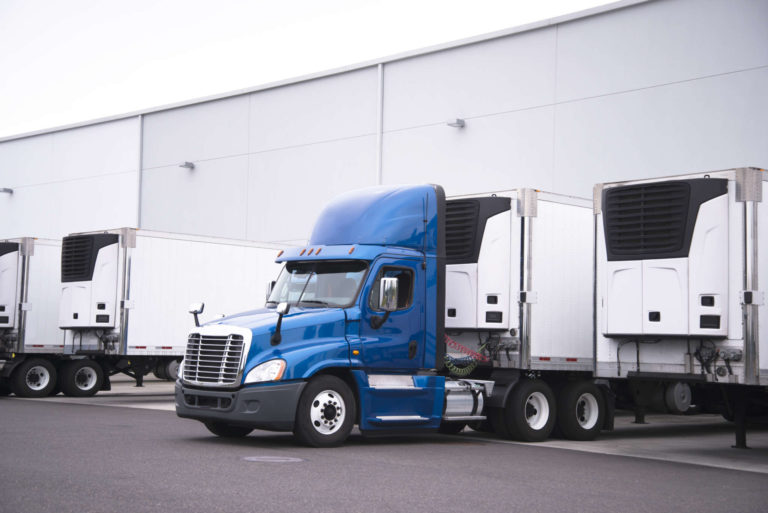
How to Pack & Load a Moving Truck
Not sure how to pack a moving truck? From the positioning of furniture to the use of moving supplies, there are multiple ways to maximize your storage space in the back of the truck rental. Utilizing this space effectively and efficiently is sure to save you from making multiple trips back and forth between homes. In addition to maximizing space, those planning a DIY move without the help of moving labor professionals must know how to distribute the weight evenly in the back of the truck and how to incorporate certain tools to prevent damage to belongings. For a step-by-step guide to packing and loading a moving truck like a pro, read our tips below. Good luck and happy moving!
Figure out what size truck rental you need
At least one month before the move, go ahead and reserve a truck rental for your moving date. From smaller cargo vans to larger 26 ft. trucks, most truck rental companies offer a plethora of shapes and sizes to choose from. Whatever you do though, try to avoid choosing a truck that is too small for your belongings. While a smaller truck may be cheaper to rent, it will only end up costing you extra time and money in the long run. For instance, if a truck is too small to hold your belongings, you’ll be forced to make multiple trips back and forth. To ensure that you choose the right size truck rental for your next move, read the truck rental company’s size guidelines carefully. When in doubt, call a truck rental representative for details on sizing
Gather packing supplies
Prior to packing a moving truck, be sure to gather all necessary packing supplies. This includes sturdy boxes, plastic wrap, packing tape, a dolly, furniture pads and moving blankets. Since your belongings may shift while in transit, it’s especially important that all items are packed with proper protection. This may mean adding moving blankets and padding to fill in the gaps between your boxes and belongings. Other important packing supplies to have on-hand include a mattress bag to cover your mattress and moving straps for holding items in place.
Recruit friends to help
Planning to pack and load a moving truck by yourself? Our advice: don’t! Before moving, ask friends and family for help with the loading and unloading process. It’s never a good idea to lift and carry heavy furniture, boxes and other items by yourself. Not only could you potentially injure yourself, but you could also end up with a move that takes forever. Having friends and family to help will dramatically speed up the moving process. This could ultimately save you money as well, since your truck rental time will be considerably shorter.
Disassemble furniture
Furniture items take up quite a bit of space on a truck. To save room, make sure to disassemble and take apart all furniture items. This should help maximize your space in the truck, as well as distribute the weight of heavy furniture more evenly. To start, you can disassemble dining tables by taking off the legs. This will allow you to store the dining table and its legs in an upright position on the truck. Next, disassemble all bed frames and headboards, as well as desks and dressers. If you’re unable to disassemble large furniture, try storing moving boxes and other items inside drawers or on top of the furniture to avoid crushing smaller objects.

Choosing the Right Forklift for Your Business
Choosing the right forklift is important for your business. It affects everything from operation costs, productivity, employee morale and stock management
Environment
Your business environment will influence the type of forklift, tyre selection and fuel type
Load Size / Capacity
It would be a big mistake to choose a forklift with a maximum lift capacity that is below your requirements
The type of load also matters as there are specific forklift attachments that can enhance a standard forklift and help you move the load more efficiently. There are many types of attachments available: appliance clamps, carton clamps, paper roll clamps, etc
Height
Similar to maximum load, you want to ensure you choose a forklift which will meet your height restrictions

MAXIMIZE CONTAINER SPACE. MINIMIZE DAMAGE TO YOUR STUFF
As you’re packing, take a few extra minutes to write an inventory of your items. If you have more than one container or are using a PODS container in combination with a rental truck, be sure to document what goes where.
Pack your valuables and essentials separately and plan on keeping these items with you.
Perishable items are not permitted in PODS containers. Consult your Rental Agreement for a full list of prohibited items.
Put heavy items in smaller boxes for easier lifting. Lightweight items can go in larger boxes.
Pack as much as you can into boxes. This will provide greater protection for your belongings and will make loading your PODS container easier.